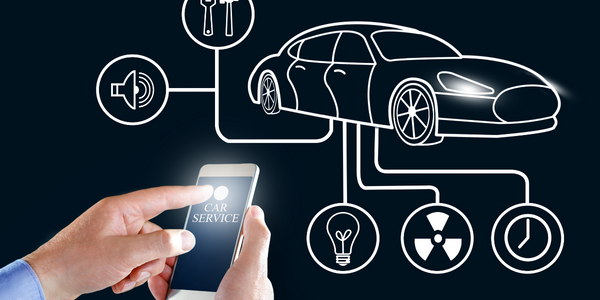Region
- Europe
Product
- Omnis Threat Horizon
- Arbor Edge Defense (AED)
- Arbor Cloud
Tech Stack
- DDoS Protection
- Cloud Solutions
- Hybrid Security Solutions
Implementation Scale
- Enterprise-wide Deployment
Technology Category
- Cybersecurity & Privacy - Cloud Security
- Cybersecurity & Privacy - Network Security
Use Cases
- Cybersecurity
Services
- Cybersecurity Services
About The Customer
The customer is a Western European organization that consults on network infrastructure with insurance, government, and financial institutions in the region. They also offer hosting services through two local service providers for some of their client’s networks. Initially, they were a small company but are currently on an accelerated growth path. They had two Data Centers housing their customer networks but only one had DDoS protection and it was in the form of an always-on cloud implementation. Despite this, they still had some identified DDoS activity that seemed to get by the cloud solution.
The Challenge
The Western European organization, which consults on network infrastructure with insurance, government, and financial institutions, was experiencing accelerated growth and increased regulations around banking customers. This led to the realization that they needed to upgrade their DDoS protection immediately. Despite having an always-on cloud solution for DDoS protection, the organization was still experiencing some DDoS activity that seemed to bypass the cloud solution. The organization was initially leaning towards an always-on cloud solution, but the NETSCOUT team presented them with a report from the Omnis Threat Horizon Kiosk which showed several attacks on their datacenters that regularly bypass always-on cloud solutions.
The Solution
The NETSCOUT team presented the executive team with a hybrid solution. The on-premise Arbor Edge Defense (AED) would take care of the attacks that they had already experienced which routinely get by always-on cloud solutions while the Arbor Cloud solution would take care of the attacks that overwhelm the internet circuit prior to getting to the network. This solution technically met all their goals. They purchased two AEDs to cover their datacenters and will eventually purchase access to Arbor Cloud based on its tight integration with the AEDs. They are already looking to Cyber Investigator to augment their security posture.
Operational Impact

Case Study missing?
Start adding your own!
Register with your work email and create a new case study profile for your business.
Related Case Studies.

Case Study
Enel Secures Italian Power Generation Network
Electric energy operators around the world are working to increase the reliability and cyber resiliency of their systems. This includes Enel, a global power company that manages and monitors the Italian power grid. This grid:• Serves 31 million customers• Has a net installed energy capacity exceeding 31 gigawatts• Includes more than 500 power generation plants,including hydroelectric, thermoelectric, and wind• Is managed and monitored by Enel 24/7/365• Is operated by Terna, the Italian Transmission System Operator (TSO)Enel is responsible for the availability of the grid’s underlying ICS and industrial network. It also manages Regional Control Centers and Interconnection Centers which connect with the TSO. The TSO manages the flow of energy to the grid plus controls and remotely regulates the power generation of power plants, increasing and decreasing power production as required. The complex system of interaction and cooperation between Enel and the TSO has strong security implications as well as operational and business challenges.

Case Study
Securing the Connected Car Ecosystem
In-vehicle communications and entertainment system hosts high-value or sensitive applications. API libraries facilitate communication and sharing of vehicle data. These API libraries are vulnerable to reverse engineering and tampering attacks and may even result in loss of passenger safety. Attackers can inject malware that may be able to migrate to other in-car networks such as the controller-area-network (CAN) bus which links to the vehicle’s critical systems. Software provided for dealers to interface with cars through the OBD2 port is vulnerable to reverse engineering and tampering attacks. Hackers may be able to abuse these tools to inject malicious code into the ECUs and CAN bus. Attackers can lift the cryptographic keys used, and use that to build their own rogue apps/software. Their cloned version of the original app/software may have altered functionality, and may intend to gain access to other in-car networks.

Case Study
Secure and Cloud-based Data Marketplace
The great promise of new connected concepts of industry like 'Industry 4.0' is their ability to deliver a historically unparalleled level of responsiveness and flexibility. While modern supply chains are already heavily integrated and designed to be fluid and fast moving, a large swathe of manufacturing still remains beholden to economies of scale, large production runs, and careful preplanning.The Industrial Internet of Things (IIoT) is set to change this by allowing small-batch or even custom manufacturing on a truly industrial scale. With machines whose functions are not set in stone, but flexible and determined by their operating software and with a new form of connectivity bringing industrial engineers, product manufacturers, and end users closer together than ever before. Ad-hoc adjustments to automotive parts, for example, during active product runs or the bespoke manufacturing of custom sneakers become very viable options indeed.Much of this remains a theoretical vision, but IUNO, the German national reference project for IT security in Industry 4.0 demonstrates the new capabilities in action with a secure technology data marketplace running a smart drinks mixer.

Case Study
Expedia Hosted by 2lemetry Through AWS
Expedia is committed to continuous innovation, technology, and platform improvements to create a great experience for its customers. The Expedia Worldwide Engineering (EWE) organization supports all websites under the Expedia brand. Expedia began using Amazon Web Services (AWS) in 2010 to launch Expedia Suggest Service (ESS), a typeahead suggestion service that helps customers enter travel, search, and location information correctly. According to the company’s metrics, an error page is the main reason for site abandonment. Expedia wanted global users to find what they were looking for quickly and without errors. At the time, Expedia operated all its services from data centers in Chandler, AZ. The engineering team realized that they had to run ESS in locations physically close to customers to enable a quick and responsive service with minimal network latency.
.png)
Case Study
OTA Software Updates for Smart Energy (gridX)
gridX has a requirement for over-the-air software updates for their gridBox devices and used the Yocto Project for their builds. The driver for the requirement was having the ability to quickly support new features, as well as deploying bug fixed and path known security vulnerabilities. New software updates with a US stick manually to all gridBox devices in the field would be prohibitively expensive and labor-intensive.

Case Study
Transformed IT Infrastructure Improves Business Agility
A global security, storage, and systems management software provider planned to demerge into two separate companies. To prepare, it undertook a major overhaul of its IT infrastructure and operations strategy. A key requirement: streamlining the Hosting Group, which handled compute, storage, and middleware operations. These functions had grown complex and had a wide geographic distribution. The company planned to bring them under closer in-house management.The company looked to increase its business agility so it could quickly and creatively respond to customer demands with improved internal collaboration and optimized go-to- market and IT service delivery capabilities. Modernizing IT functions, and making them more responsive, was critical to achieving these goals.



